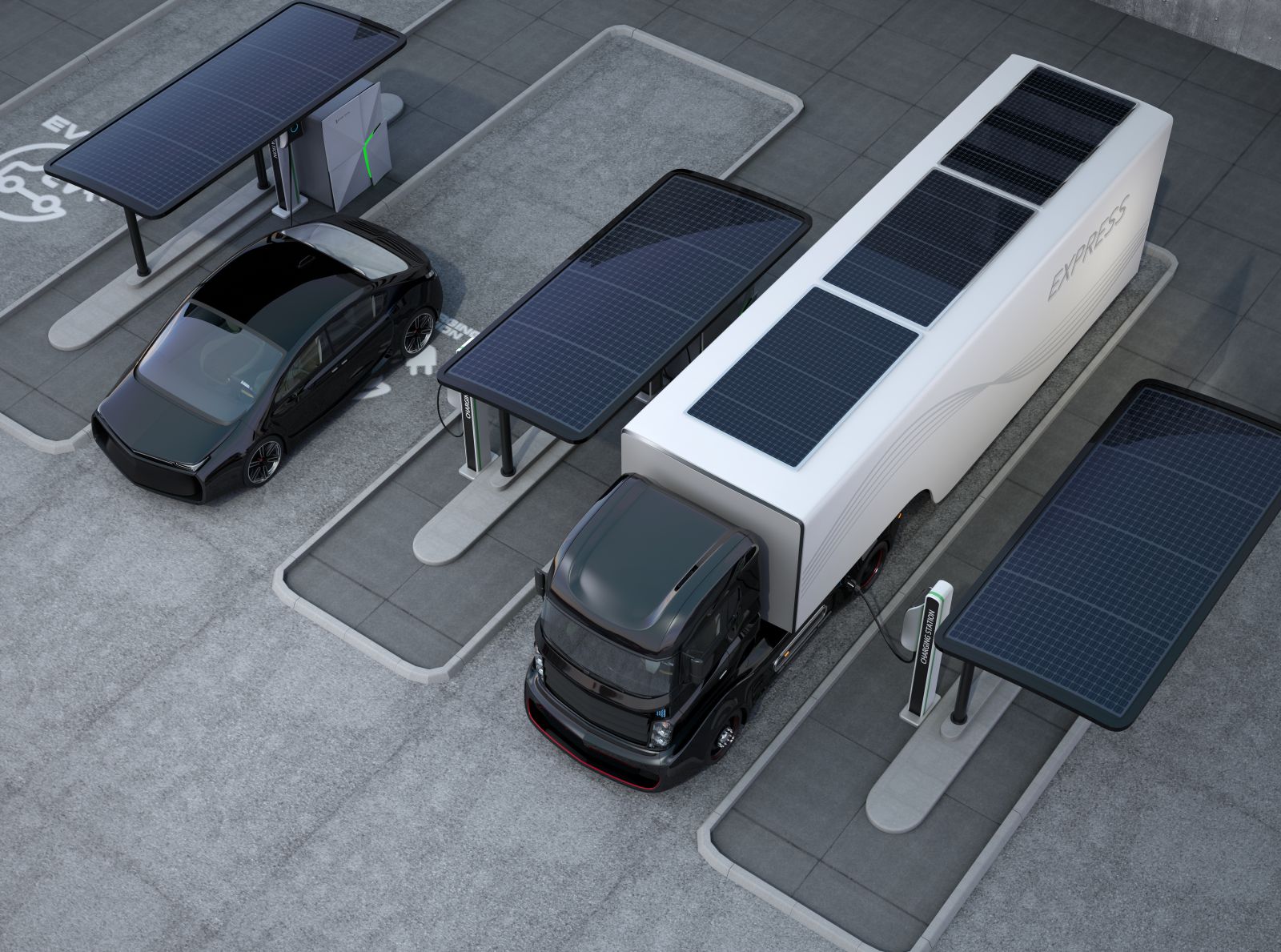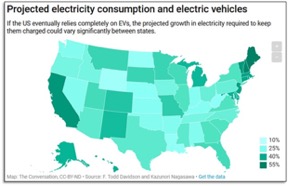Charging the Kings of the Road Medium- and heavy-duty vehicle electrification and the utility grid
When most people think about vehicle electrification, they invariably think about electric cars. This shouldn't be surprising - the most popular brand of electric automobiles shipped nearly half a million vehicles in 2020. However, when looking at ways to improve air quality, electrifying medium- and heavy-duty (M/HD) vehicles is an obvious place to start. Even though they make up only 4.6 percent of the total vehicles, M/HD vehicles (gross vehicle weights of over 10,000 lbs.) produce nearly 40 percent of transportation sector air pollution. The number of M/HD vehicles is also climbing, even as the number of light-duty (L/D) vehicles such as passenger cars, sport-utility vehicles (SUVs), and light trucks, is declining.
 L/D vs M/HD and their effect on charging requirements
L/D vs M/HD and their effect on charging requirements
Besides the amount of air pollution they produce, L/D and M/HD vehicles differ in several other ways that are critical to their electrification. These differences include:
- Amount of miles driven per day: While the average passenger car is driven less than 26 miles per day, the average M/HD vehicle drives between 50 and 150 miles per day.
- Weight: The weight of an average passenger car is roughly 4,000 lbs. In contrast, the weight of an M/HD vehicle starts at 10,000 lbs and can easily go over 30,000 lbs. For example, an average school bus weighs in at around 20,000 lbs, while a refuse truck or public transit bus can weigh 30,000 lbs or more.
- Use: Most passenger cars are, by definition, used by consumers. If a passenger car breaks down, the owner can take a taxi/rideshare, drive their spouse's car, or use public transportation. M/HD vehicles are overwhelmingly utilized for commercial uses; if they don't operate, money is lost.
These differences are reflected in the energy storage and charging needs of these classes of vehicles when they are electrified. The typical passenger electric vehicle (EV) seldom exceeds 100kWh of battery capacity; the average battery for an electrified school bus has 150kWh of storage - and some public transit electric buses can have battery capacities as high as 600kWh. The difference in the amount of energy utilized per day by these types of vehicles is even more stark: the average passenger EV only utilizes roughly 10kWh of power per day, while an electric school bus uses 6 to 12 times that amount (between 60kWh and 120kWh of energy per day). Other heavy vehicles like public transit buses can use over 400kWh of energy per day.

These differences drive the requirements for M/HD EV charging infrastructure. While a Level 2 AC charger (up to 18kW) is more than adequate for most passenger EVs, a typical M/HD EV charger starts at 60kW, and goes up to 500kW. Charging times (and charger duty cycles) are also very different - an 18kW Level 2 AC charger can charge a passenger EV in about 35 minutes (assuming the average power consumption of 10kW). A 60kW charger, on the other hand, would take between 1 to 2 hours to charge an electric school bus, and nearly 7 hours to charge a public transit bus. Given the use cases of M/HD EVs, it also becomes critical for their chargers to have high reliability, even if forced to operate on a continuous basis.
M/HD EV chargers, V2G and the utility grid - a silver lining
The impact of M/HD EVs on the grid is equally pronounced. The average number of cars per household is 1.88. This generally doesn't pose an issue for power availability at the home level, but an M/HD electric school bus yard with 100 buses would need between 6MWh and 12MWh of power each day to charge its fleet. If these buses sare charged across an 8-hour window, the power feed into the bus yard would need a capacity of 0.75MW and 1.5MW, which is at the edge of a standard commercial power feed size in most cities.
 Electrifying a high percentage of M/HD vehicles would make a significant and cumulative impact. There were nearly 4 million M/HD vehicles in the US in 2019, according to the Bureau of Transportation Statistics. If all of these vehicles were electrified and each consumed 100kWh of power per day, it would add 400 million kWh of daily power consumption to the US electrical grid (a grid that has a daily energy generation capacity of roughly 11,000 million kWh, including small-scale PV solar generation). These M/HD EVs would increase US energy consumption by nearly 4 percent - much of which would be consumed between 6PM and 6AM, which includes electrical consumption peak hours (typically 5PM to 9PM in most metropolitan areas).
Electrifying a high percentage of M/HD vehicles would make a significant and cumulative impact. There were nearly 4 million M/HD vehicles in the US in 2019, according to the Bureau of Transportation Statistics. If all of these vehicles were electrified and each consumed 100kWh of power per day, it would add 400 million kWh of daily power consumption to the US electrical grid (a grid that has a daily energy generation capacity of roughly 11,000 million kWh, including small-scale PV solar generation). These M/HD EVs would increase US energy consumption by nearly 4 percent - much of which would be consumed between 6PM and 6AM, which includes electrical consumption peak hours (typically 5PM to 9PM in most metropolitan areas).
The silver lining is battery capacity. M/HD EV batteries represent a storage capacity of roughly 600 million kWh (about 6 percent of daily energy consumption). In other words, these electrified M/HDs represent a significant amount of energy storage that could mitigate power emergencies (and if you lived in Texas during February, you get this). This technology is called "vehicle-to-everything" (V2X), and includes vehicle-to-grid (V2G) and vehicle-to-building (V2G). While V2G is only recently starting to be commercialized in the US, it's important not only for its ability to stabilize the grid, but also reduce energy costs by allowing fleet operators to sell back their energy to utilities during peak demand hours.
The best part of this equation is that vehicle OEMs, utilities, state governments, aggregators (the vendors whose software coordinate putting power back onto the grid while ensuring vehicles are adequately charged), and charging equipment manufacturers are all working on the standards needed to commercialize V2G. This model will allow everyone to gain from a more resilient power grid, lower vehicle operating costs, and cleaner transportation.
Mike Heumann is VP of Marketing, and Joseph Gottlieb is CTO at Rhombus Energy Solutions. Rhombus Energy Solutions designs and develops products for electrical energy conversion and control.
Rhombus Energy Solutions | rhombusenergysolutions.com
Author: Mike Heumann and Joseph Gottlieb
Volume: 2021 May/June









